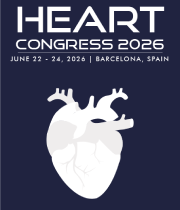Title : PCSK9 inhibitors beyond cholesterol regulation
Abstract:
Atherosclerosis, the leading cause of cardiovascular diseases, is driven by high blood cholesterol levels and chronic inflammation. The disruption of the hepatic interaction between Proprotein Convertase Subtilisin/Kexin 9 (PCSK9) and Low-Density Lipoprotein Receptor (LDLR) downregulates blood cholesterol levels and reduces cardiovascular events. Recent data suggest that other members of the LDLR superfamily may be targets of PCSK9.In this presentation I will show that LDLR-related protein 5 (LRP5) is a PCSK9 target, and both proteins participate in foam cell formation and hence, in the mechanism of lipid accumulation and atherosclerotic plaque formation.I will first show that LRP5 is needed for macrophage lipid uptake since LRP5-silenced macrophages have less intracellular cholesterol accumulation. Immunoprecipitation experiments will show that LRP5 forms a complex with PCSK9 in lipid-loaded macrophages opening the possibility that PCSK9 induces lysosomal LRP5 degradation in a similar manner than it does with LDLR. We have also studied the role of PCSK9 and LRP5 in the inflammatory response by TLR4/NFkB signaling pathway and show that PCSK9 gene interference decreases inflammation supporting a role for PCSK9 as an inflammatory mediator in atherosclerosis.We then validated our results in an in vivo mice model. We analyzed the differential expression of cholesterol related genes and proteins including LRP5, PCSK9, VLDLR, LRP6, LRP2 and LRP1 in wildtype (Wt) and LRP5 knock-out (Lrp5-/-) mice fed a normocholesterolemic (NC) or a hypercholesterolemic (HC) diet. Lipid uptake was studied in liver resident cells (HepG2) and in liver fat storing cells (hepatic stellate cells) with and without LRP5 and PCSK9. Results show that cholesterol accumulates in livers of Wt and Lrp5-/- mice. This accumulation can be explained by the increased expression of LRP receptors in HC Wt mice or scavenger receptors in HC Lrp5-/- mice. More importantly, PCSK9 and LRP5 bind intracellularly in fat storing liver cells but not in structural liver cells and both proteins are needed for lipid uptake.
Audience Take Away
- They will learn new roles of PCSK9
- PCSK9 inhibitors are being used worldwide and are expected to increase their sales in the next years. However the roles of PCSK9 beyond lipid lowering are vastly unknown. In this presentation the audience will learn new roles of PCSK9 to be taken into account when prescribing/taking PCSK9 inhibitors.



